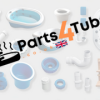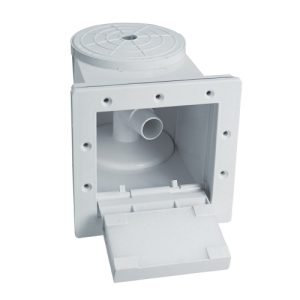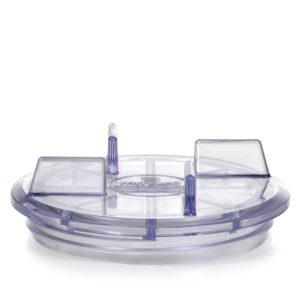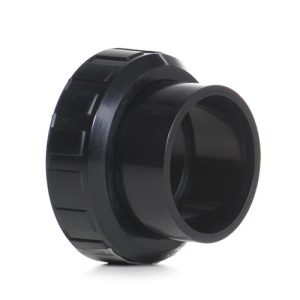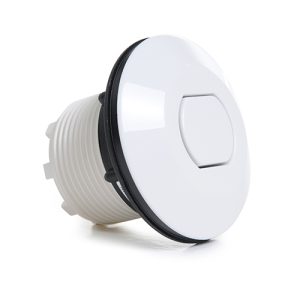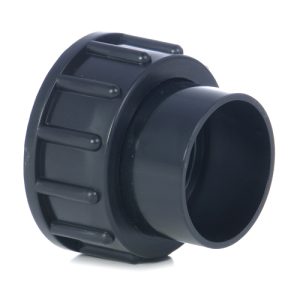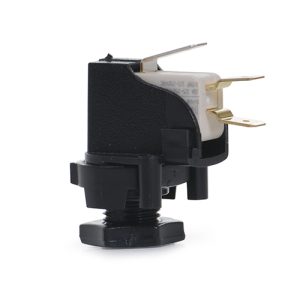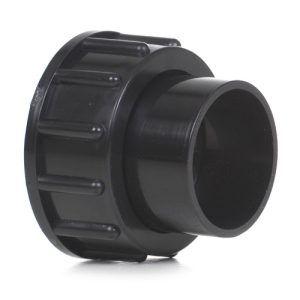BIO-UV Quartz Guide
£18.75 Inc VAT
Out of stock
Want to be notified when this product is back in stock?
BIO-UV Quartz Guide
Essential Centering and Support Component for UV Lamp Assembly
As a retailer of hot tub spare parts and pool equipment, I supply this critical positioning component for BIO-UV ultraviolet water treatment systems. The quartz guide serves as a spring-loaded centering mechanism that maintains proper alignment of the quartz sleeve within the reactor chamber while providing cushioning and vibration damping during system operation. This component, which BIO-UV introduced in 2008 to replace earlier anti-vibration cup designs, plays a fundamental role in protecting fragile quartz elements, ensuring optimal UV lamp positioning, and maintaining the precise geometric relationships required for effective water treatment.
Understanding Quartz Guide Function
The quartz guide installs at the base of the UV reactor chamber in a dedicated receptacle designed to support the sealed end of the quartz sleeve. Its spring-loaded design performs multiple crucial functions within the UV system assembly. The guide centers the quartz sleeve along the longitudinal axis of the reactor chamber, preventing contact between the fragile quartz and the metal reactor walls that could cause fracture. This centering function ensures the UV lamp housed within the sleeve maintains optimal distance from the reactor’s reflective interior surfaces, maximizing UV radiation distribution throughout the water volume.
The spring element within the guide provides controlled compliance that absorbs mechanical shocks and vibrations transmitted through the plumbing system. Pool equipment installations typically experience vibration from pump motors, flow turbulence, and thermal expansion cycles. Without adequate damping, these forces could cause the rigid quartz sleeve to resonate or impact reactor surfaces, leading to premature failure through crack propagation or catastrophic fracture.
Spring Effect and Load Management
The quartz guide’s spring characteristic creates what BIO-UV describes as a “bounced effect” – a resilient support that allows slight movement while maintaining centering forces. This compliance accommodates thermal expansion of the quartz sleeve as it heats during UV lamp operation, preventing the development of excessive stress that could occur if the sleeve were rigidly mounted at both ends. The spring action also provides shock absorption during installation, protecting the quartz from impact damage as the sleeve is inserted into the reactor chamber.
When properly functioning, the quartz guide provides noticeable spring resistance when a new quartz sleeve is positioned into the reactor. This tactile feedback confirms correct installation and adequate spring force for proper support. Loss of this spring effect indicates guide degradation requiring replacement, as inadequate support can allow the quartz sleeve to shift position during operation or sustain damage from inadequate vibration damping.
Material Properties and Design Evolution
Since introducing the quartz guide design in 2008, BIO-UV has optimized the component’s material composition and geometry for long-term reliability in demanding pool and spa environments. The guide must maintain its elastic properties despite continuous exposure to water, chemicals, and temperature variations encountered during UV system operation. The material resists compression set, retaining spring force throughout extended service periods despite being subjected to continuous loading from the quartz sleeve assembly.
The guide’s design evolved from earlier anti-vibration cup configurations used prior to 2008, which consisted of two interlocking caps that provided similar support functions. The current quartz guide design offers improved reliability, easier installation, and more consistent performance characteristics compared to the earlier two-piece cup system. Operators maintaining older BIO-UV systems may encounter either design depending on reactor age and previous service history.
Installation and Positioning
The quartz guide installs into a machined receptacle at the bottom of the BIO-UV reactor chamber, positioned to receive the sealed, domed end of the quartz sleeve. Installation requires attention to proper orientation and full seating within the receptacle to ensure the guide functions as designed. In multi-lamp reactor configurations, separate guides are installed for each lamp position, maintaining independent support and centering for each quartz sleeve assembly.
During quartz sleeve installation, the sleeve’s domed end is carefully inserted into the reactor chamber and aligned with the guide. Gentle pressure seats the sleeve into the guide’s spring-loaded support, with the spring compressing to provide controlled retention force. Proper installation produces the characteristic bounced effect when the sleeve is pressed and released, confirming adequate spring function and secure positioning.
Degradation Indicators and Inspection
The quartz guide experiences gradual wear through several mechanisms during normal service. The spring element can lose elasticity over time, particularly in systems experiencing frequent thermal cycling or high operating temperatures. Chemical exposure from pool sanitizers may degrade polymer components, reducing material properties and spring performance. Physical wear can occur at contact points where the guide interfaces with both the reactor housing and the quartz sleeve.
Signs indicating quartz guide replacement is necessary include loss of the bounced effect during sleeve installation, visible deformation or cracking of guide components, inability to maintain quartz sleeve centering, or excessive play allowing sleeve movement within the reactor. BIO-UV recommends operators of very old reactors (more than 10 years) pay particular attention to guide condition during routine maintenance, as these components may have accumulated significant wear requiring replacement.
Maintenance and Service Considerations
Quartz guide inspection and replacement should be incorporated into UV system maintenance protocols, particularly during lamp and quartz sleeve service intervals. Access to the guide requires complete removal of the UV lamp and quartz sleeve assemblies, allowing visual inspection of guide condition and functional testing of spring characteristics. The guide can be removed from its reactor receptacle for detailed examination or replacement.
When installing replacement guides, ensuring proper seating in the reactor receptacle is essential for correct function. The guide must be fully inserted and positioned to provide proper support when the quartz sleeve is installed. After guide replacement and sleeve reinstallation, verification of the characteristic spring effect confirms successful installation and adequate support function.
Technical Specifications
| Specification | Details |
|---|---|
| Product Name | BIO-UV Quartz Guide |
| SKU | 7111676080 |
| Category | UV System Spare Parts |
| Compatible Equipment | BIO-UV UV Reactor Systems (Post-2008 Models) |
| Weight | 0.24 kg |
| Dimensions (L x W x H) | 0.93m x 0.06m x 0.06m |
| Volume | 0.003348 m³ |
| Design Type | Spring-Loaded Centering Guide |
| Primary Functions | Quartz Sleeve Support, Centering, Vibration Damping |
| Application | UV Reactor Chamber Assembly |
| Design Generation | Post-2008 (replaces anti-vibration cup design) |
Protecting Critical UV Components
The quartz guide exemplifies how seemingly simple support components contribute fundamentally to UV system reliability and longevity. By maintaining proper quartz sleeve alignment, providing vibration damping, and accommodating thermal expansion, this component protects expensive quartz sleeves and UV lamps from mechanical failure while ensuring the geometric precision required for optimal UV water treatment performance. Regular inspection and timely replacement of degraded guides represents a modest investment that protects far more costly system components while maintaining the water quality performance that justifies UV technology adoption in pool and spa applications.
| Weight | 0.24 Kilograms |
|---|---|
| Length | 0.93 Meters |
| Width | 0.06 Meters |
| Height | 0.06 Meters |
| Volume | 0.003348 CubicMeters |
| Supplier | GoldenC |

